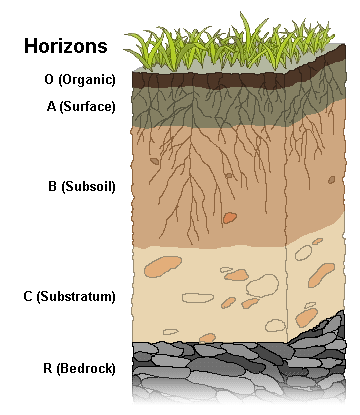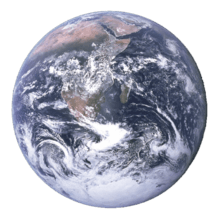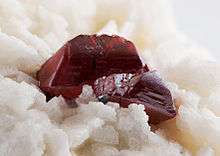Bedrock
Bedrock in geology is the lithified rock that lies under loose softer material called regolith within the surface of the Earth's crust or other terrestrial planets.


Components of bedrock
Bedrock essentially refers to the substructure composed of hard rock exposed or buried at the earth's surface; an exposed portion of bedrock is often called an outcrop. Bedrock may have various chemical and mineralogical compositions and can be igneous, metamorphic or sedimentary in origin. The bedrock may be overlain by broken and weathered regolith which includes soil and the subsoil.
Engineering geology
The surface of the bedrock beneath the soil cover (regolith) is also known as rockhead in engineering geology,[1][2] and its identification by digging, drilling or geophysical methods is an important task in most civil engineering projects. Superficial deposits (also known as drift) can be extremely thick, such that the bedrock lies hundreds of meters below the surface.[3]
Weathering of bedrock
Bedrock when exposed or within the subsurface may experience weathering and erosion by external factors. Weathering may be physical or chemical and alters the structure of the rock and may cause it to erode and or alter over time based on the interactions between the mineralogy and its interactions. Bedrock may also experience subsurface weathering at its upper boundary, forming saprolite.[4]
Geologic map
A geologic map of an area will usually show the distribution of differing bedrock types, rock that would be exposed at the surface if all soil or other superficial deposits were removed.[5]
See also




References
- Price, David George (2009). "The Basis of Engineering Geology". In de Freitas, Michael H. (ed.). Engineering Geology: Principles and Practice. Springer. p. 16. ISBN 978-3540292494.
- McLean, A.C.; Gribble, C.D. (9 September 1985). Geology for Civil Engineers (Second ed.). CRC Press. p. 113. ISBN 978-0419160007.
- Swinford, E. Mac (2004). "What the glaciers left behind—the drift-thickness map of Ohio" (PDF). Ohio Geology. No. 1. Ohio Department of Natural Resources, Division of Geological Survey. pp. 1, 3–5. Archived (PDF) from the original on 2 October 2012. Retrieved 12 September 2012.
- Lidmar-Bergström, Karna; Olsson, Siv; Olvmo, Mats (January 1997). "Palaeosurfaces and associated saprolites in southern Sweden". Geological Society, London, Special Publications. 120 (1): 95–124. Bibcode:1997GSLSP.120...95L. doi:10.1144/GSL.SP.1997.120.01.07. Retrieved 21 April 2010.
- "Digital Geology – Bedrock geology theme". British Geological Survey. Archived from the original on 13 December 2009. Retrieved 12 November 2009.
Further reading
- Rafferty, John P. "Bedrock". Encyclopædia Britannica. Archived from the original on 29 July 2019. Retrieved 1 April 2019.
- Harris, Clay (2013). "Bedrock". In Lerner, K. Lee; Lerner, Brenda Wilmoth (eds.). The Gale Encyclopedia of Science. 1 (5th ed.). Farmington Hills, MI: Cengage Gale. pp. 515–516.
External links
